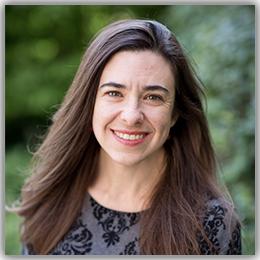Just as the identification ‘religious’ says only little in itself, there’s no such thing as the secular person. The Asadians are correct that these words come to life – have salience – in mutual tension. Like other identity categories, ‘religious’ and ‘secular’ are defined through historical use. The fact that someone is religious may seem unimportant to that person. Perhaps what matters in time x, place y is membership in St. Hedwig’s Polish Catholic Parish versus St. Casimir’s, a church equally Polish and Catholic.
Jakelić’s presentation disrupts the religious-secular binary because she looks in detail at the stories of particular persons. Lambelet points out that further investigation of the moral sources drawn upon by the actors in her cases would reveal hybridity in addition to collaboration. I agree, but disagree that this need be “surprising.” Surprise is an affective response cultivated by the very binary that Jakelić is disrupting. People who share socio-cultural space often directly or indirectly share myriad moral sources with complex genealogies. It is only in the less common instances of violent segregation that communities develop in vacuum-like conditions. As advocates of interreligious collaboration have explained for years, the ‘dialogue of life’ often results in cross-connections regardless of the success of textual and doctrinal dialogues.
In the cases portrayed by Jakelić, focus on the common enemy was more compelling than the religious-secular divide – again noted by Lambelet. It is important to note also that these enemies were themselves a mix of religious and secular actors. Namely, Solidarność and the anti-apartheid movement struggled against those wedded to the status quo – whether as a result of bourgeois complacency, elite power maintenance, ideological fervor, religious commitment, fear of change, or a combination of these and other motivations.
Looking at the South African case, it matters that the secular actors Jakelić profiled were communists (and that the religious ones were the social justice, not the authoritarian, types). This belies Asad’s definition of the secular. As Jakelić mentioned, he has said that the secular is characterized by an aversion to all pain and suffering, understood as inherently meaningless. Yet, these secular communists were willing to risk their lives for a new society. Was this because of an exchange among religious and secular actors? In itself it seems only to indicate that Asad’s ethnography of the secular was limited to its bourgeois and elite forms.
Is the religious-secular binary and its power analysis sufficient for all societies in all times? No, and Jakelić demonstrated that clearly. The next questions might include when is this binary opposition used, by which actors, in which social locations, to what ends? In terms of the cases already at hand: Was the discursive binary completely missing? Or was it operative and defused? And has it emerged in some forms subsequent to the fall of those common enemies?

